Towards more sustainable management in rice cultivation
 Colombia
Colombia
 Chile
Chile
 Peru
Peru
 Uruguay
Uruguay
Executive Summary
Family growers (less than 10 hectares) in Colombia, Chile and Peru, whose livelihoods are based on rice production currently face a variety of challenges. One of the most pressing is the increase in climate variability and consequent decrease in water availability during certain stages of the crop production. On the other hand, the conventional practice of continuous flooding during cultivation results in rice systems that have negative environmental consequences, not only because of the excessive use of water but also due to the increased emissions of greenhouse gases (GHG) such as methane (CH4).
Through the project more rice with less emissions, the development of a technological innovation is proposed through which small farmers will be able to maintain and even increase their yield, taking into account climate change mitigation, natural resource management and sustainability in rice cultivation. Under these premises, the study locally validated the benefits of efficient, competitive production with a lower environmental impact under the implementation of Alternating Irrigation - AWD technology, in rice crops on farms of small producers in Colombia, Peru and Chile. This work is financed with resources provided by FONTAGRO and with counterpart funding in Colombia from the National Federation of Rice FEDEARROZ, in Peru from the Universidad Agraria la Molina and in Chile from the Institute of Agricultural Research (INIA). Under the regional cooperation initiative, the continued transfer of practices and technologies that are generated as a result of the project is proposed.
The technological solution
According to Gonzalez et al (2010), water use in Colombia is estimated at 16,000 m3/hectare per crop are used for the maintenance of rice cultivation in its different stages. In Chile and Peru there is no precise estimate of water use, but it is indicated that the crop uses a range of 14,000 to 18,000 and 12,000 to 17,500 m3, respectively. Furthermore, the conventional practice of continuous flooding during cultivation results in rice systems that have significant negative environmental consequences, related to increased methane emissions. Consequently, the global warming potential (GWP) associated with flooded rice production systems is greater than other cereal crops. Specifically, rice cultivation is responsible for 2,027, 18,880 and 104 Gg CO2eq in Colombia, Peru and Chile, respectively (FAOSTAT, 2016).
Irrigation management practices that include alternate periods of flooding and dry land during the non-critical growth stages of rice, known as Alternate Wetting and Drying (AWD), can increase water use efficiency while reducing methane emissions without affecting performance. This practice of intelligent irrigation allows greater resilience of producers to climatic variations. This project proposed a study in three different locations, Saldaña in Colombia, Ferreñafe in Peru and Parral in Chile, applying AWD technology on selected farms characterized by family farming of irrigated rice communities. Experimental plots were established during the first two years of this project, contrasting the management of conventional irrigation with two AWD alternatives at each study site. It was possible to generate in two cycles indicators of production (yield), environmental impacts (greenhouse gas emissions) and efficiency in the use of resources on the farm (comparison of water and nutrient use).
In 2021, validation areas were established on a commercial scale in fields of innovative producers with the technological advances found during the first phase of the study. During the field-scale evaluations (validation stage), the objective was to demonstrate that AWD management techniques allow a significant reduction in water consumption and possibly costs without affecting crop yield.
In addition, a socio-economic study is being carried out that aims to estimate production costs and the economic implications of water use, in order to identify the possibilities of applying the technology in the areas.
Results
Regarding GHG, there are dissimilar results between countries, treatments and evaluation cycles. For Colombia, there were reductions between 66.7% and 98% of the accumulated net flows of CH4 and of 21.9% and 98% in the accumulated net flows of N2O, except in the third cycle where, due to the constant rainfall, there was no decrease; Chile presented a decrease in methane up to 37% in direct sowing and 26% in N2O. In the case of Peru, a methane reduction of between 37.8% and 93% was obtained, with an increase in the emission of N2O.
There were differences in the reduction in water use with respect to the control: in Colombia it was between 19.1% and 42%, in Chile between 3.5% and 28.9% and in Peru between 15.5% and 23.2%
Regarding performance, different results have been found in the evaluated localities, showing no statistically significant differences.
20 events have been organized with 1,769 participants
Beneficiaries
The direct beneficiaries are small producers in Colombia, Chile and Peru, whose livelihood is based on rice production.
- In Saldaña and Purificación, Colombia, there are near to 1,200 growers, of which 80% have less than 10 Ha, who represent a potential target population for advances made by the project.
- In Parral, Chile, where the project is carried out, approximately 80% of the rice consumed in the country is planted. This area has the largest concentration of medium and small rice farmers. 1,500 growers will be beneficiaries
- In Peru it is estimated that pver 2,000 producers will benefit from the technology.
Sustainable Development Goals
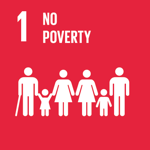
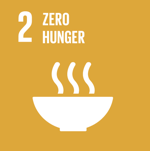
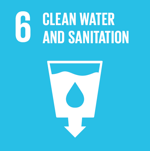
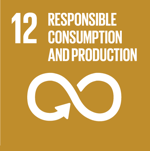
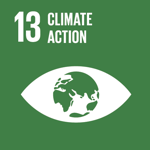
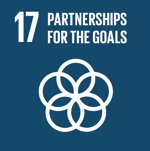
Participating Organizations
Executor
- FEDEARROZ - Colombia
Co-executor
- Instituto de Investigaciones Agropecuarias (INIA) - Chile
- Universidad Nacional Agraria La Molina (UNALM) - Perú
Associated
- International Center for Tropical Agriculture (CIAT) - Colombia
- Fondo Latinoamericano para Arroz de Riego (FLAR) - Colombia
- GRA - Sub-Grupo América Investigación en Arroz Irrigado (GRA-PRRG) - Uruguay





